Abstract
The accumulation of reducing sugars in potato tubers exposed to low temperatures occurs with concomitant formation of the enzyme invertase. During the initial period of cold treatment when reducing sugars increase rapidly, invertase formation proceeds until the level of enzyme exceeds that of an endogenous macromolecular invertase inhibitor, resulting in a basal invertase activity. As the rate of sugar accumulation decreases and the sugar level becomes nearly constant, total invertase decreases, the basal activity disappears, and a low excess of inhibitor develops. On transfer of cold-stored tubers to warmer temperatures, sugars and invertase decrease sharply and a large excess of inhibitor develops. These changes in sugars, invertase and inhibitor occur reversibly when the tubers are subjected to alternating temperatures.
Full text
PDF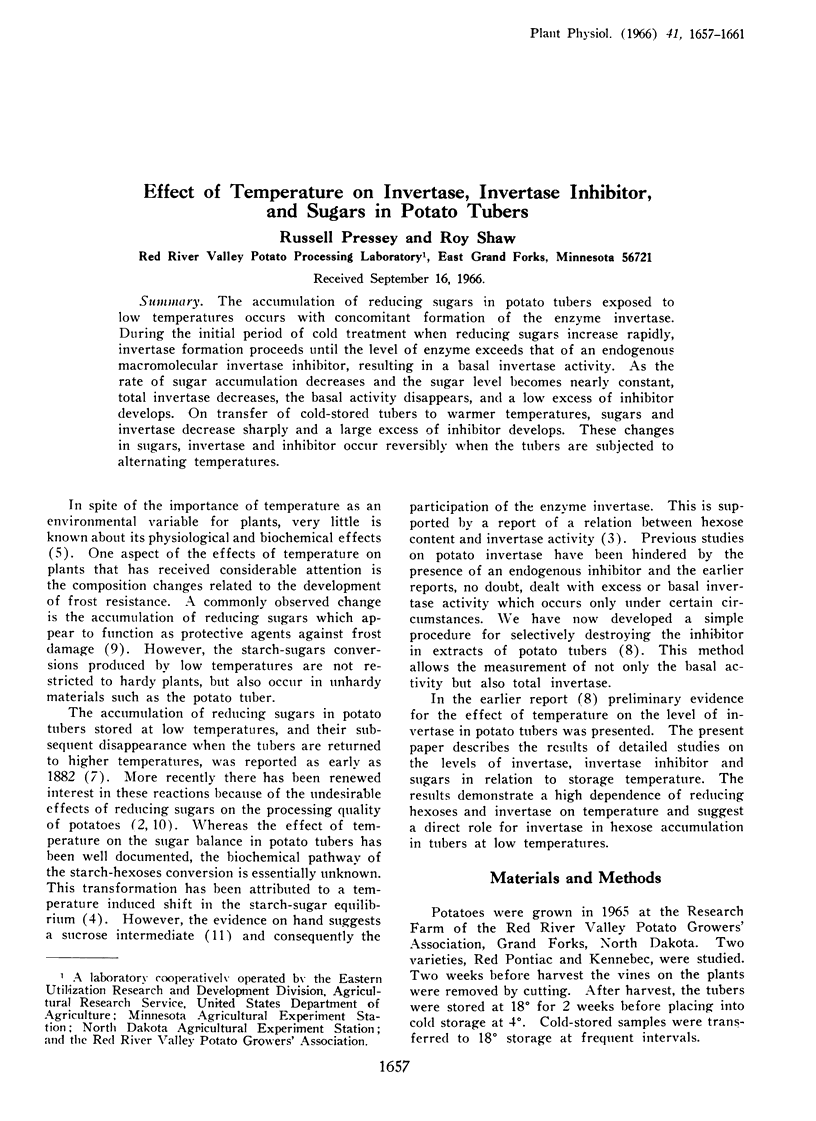
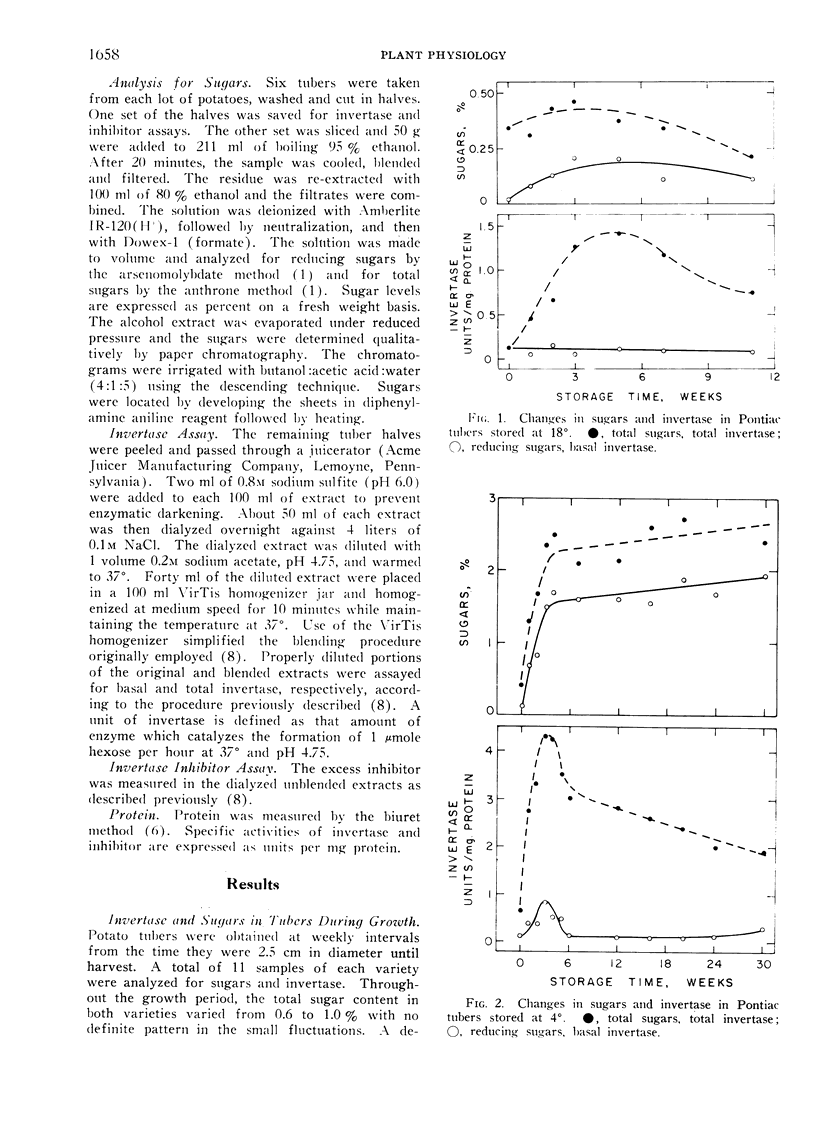
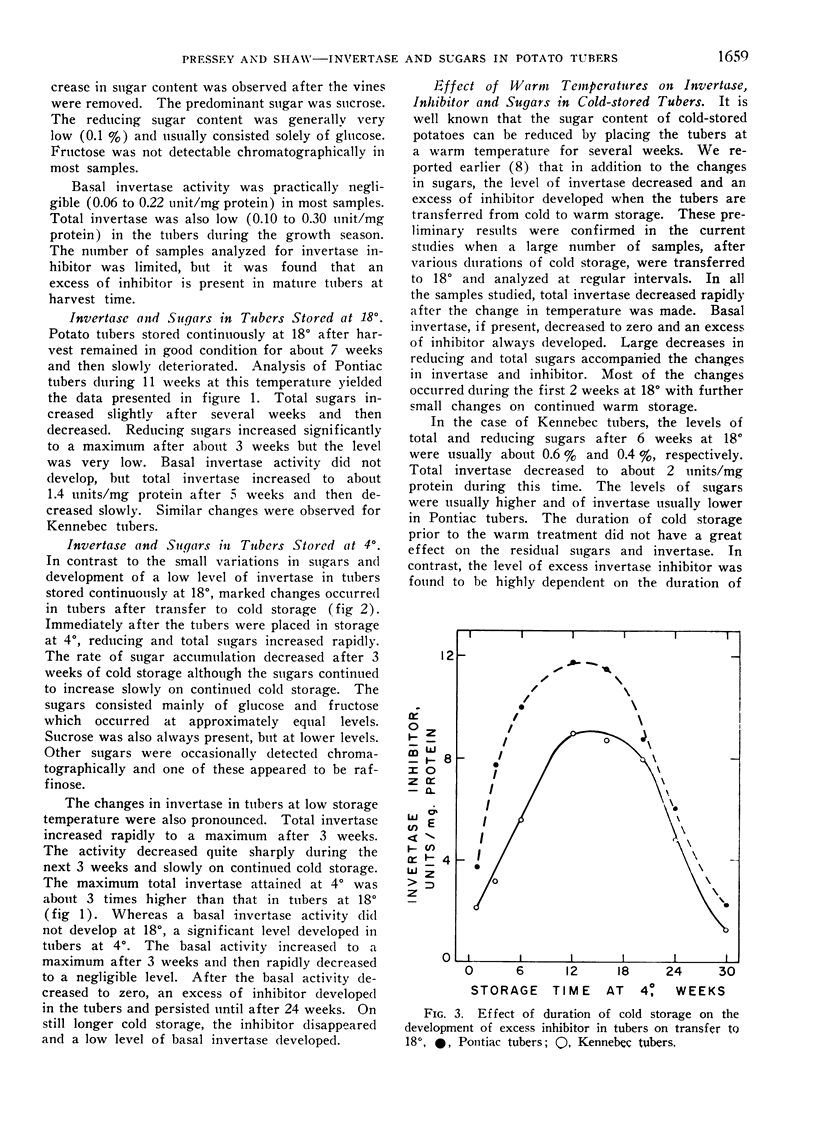
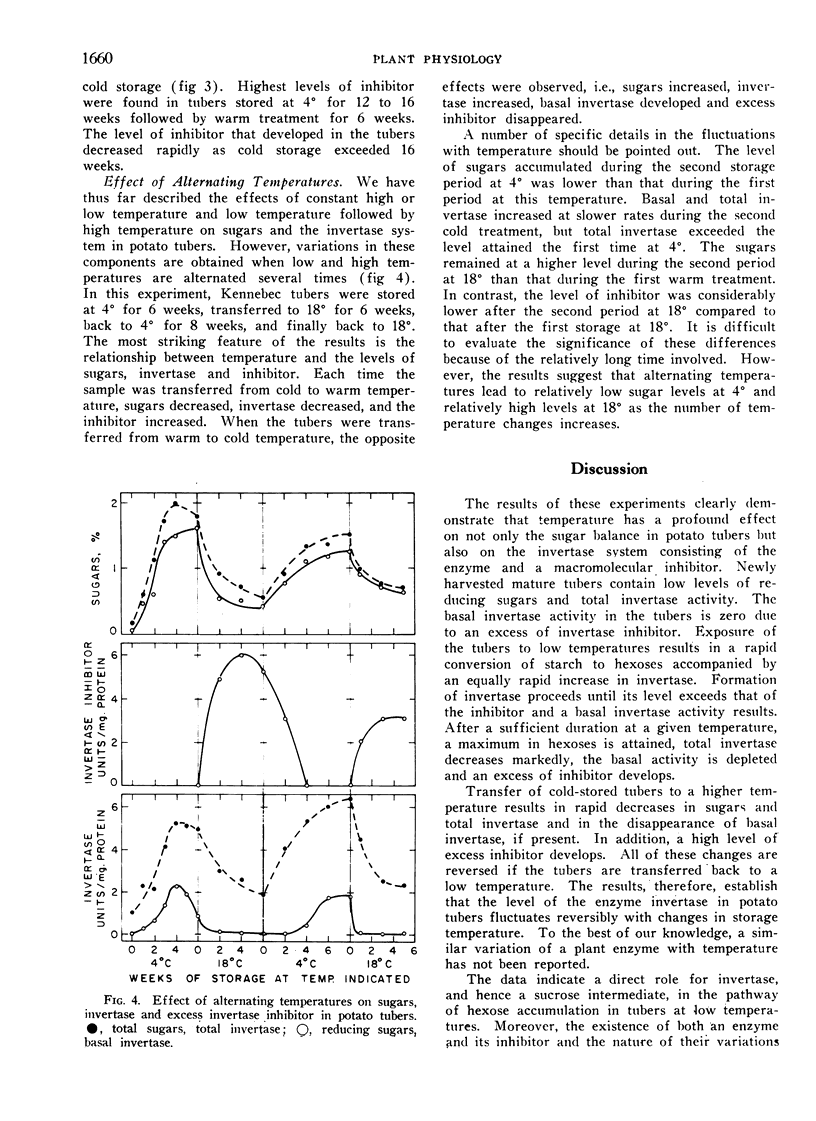
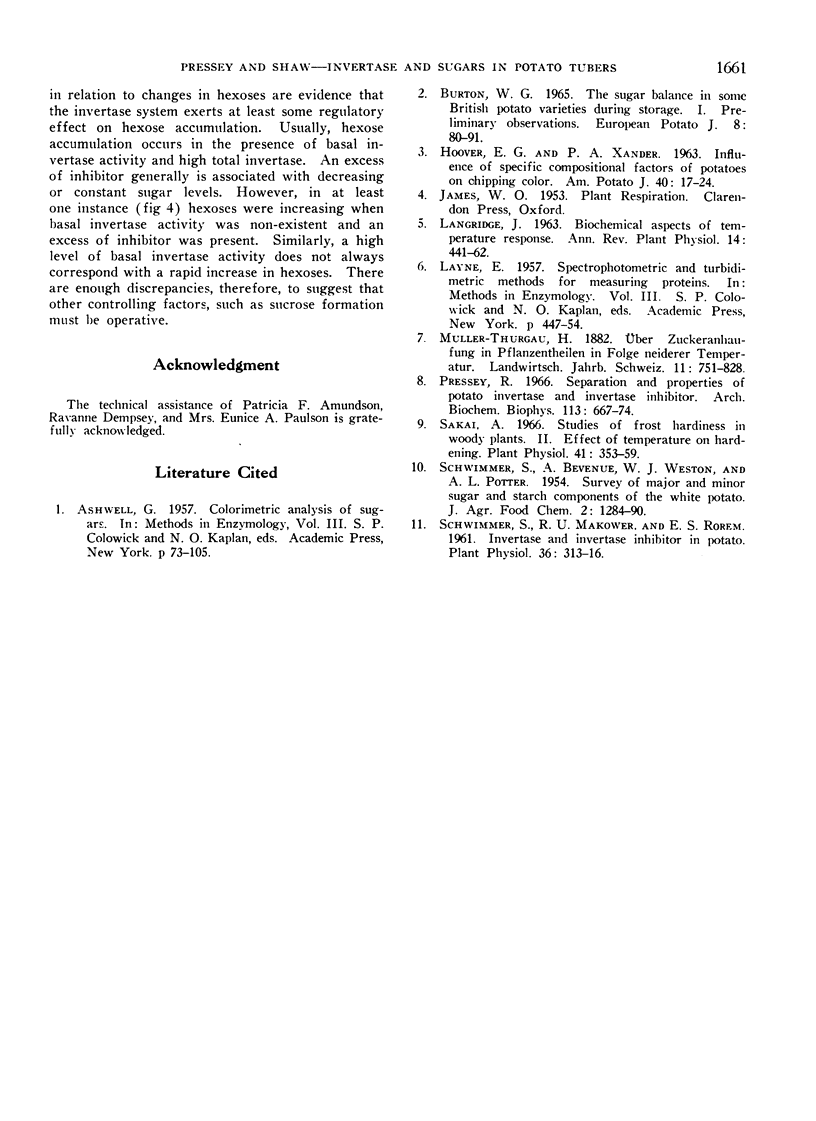
Selected References
These references are in PubMed. This may not be the complete list of references from this article.
- Pressey R. Separation and properties of potato invertase and invertase inhibitor. Arch Biochem Biophys. 1966 Mar;113(3):667–674. doi: 10.1016/0003-9861(66)90246-3. [DOI] [PubMed] [Google Scholar]
- Sakai A. Studies of Frost Hardiness in Woody Plants. II. Effect of Temperature on Hardening. Plant Physiol. 1966 Feb;41(2):353–359. doi: 10.1104/pp.41.2.353. [DOI] [PMC free article] [PubMed] [Google Scholar]
- Schwimmer S., Makower R. U., Rorem E. S. Invertase & invertase inhibitor in potato. Plant Physiol. 1961 May;36(3):313–316. doi: 10.1104/pp.36.3.313. [DOI] [PMC free article] [PubMed] [Google Scholar]


